Kraków 2017-10-02
Airport equipment.
Airport tractors.
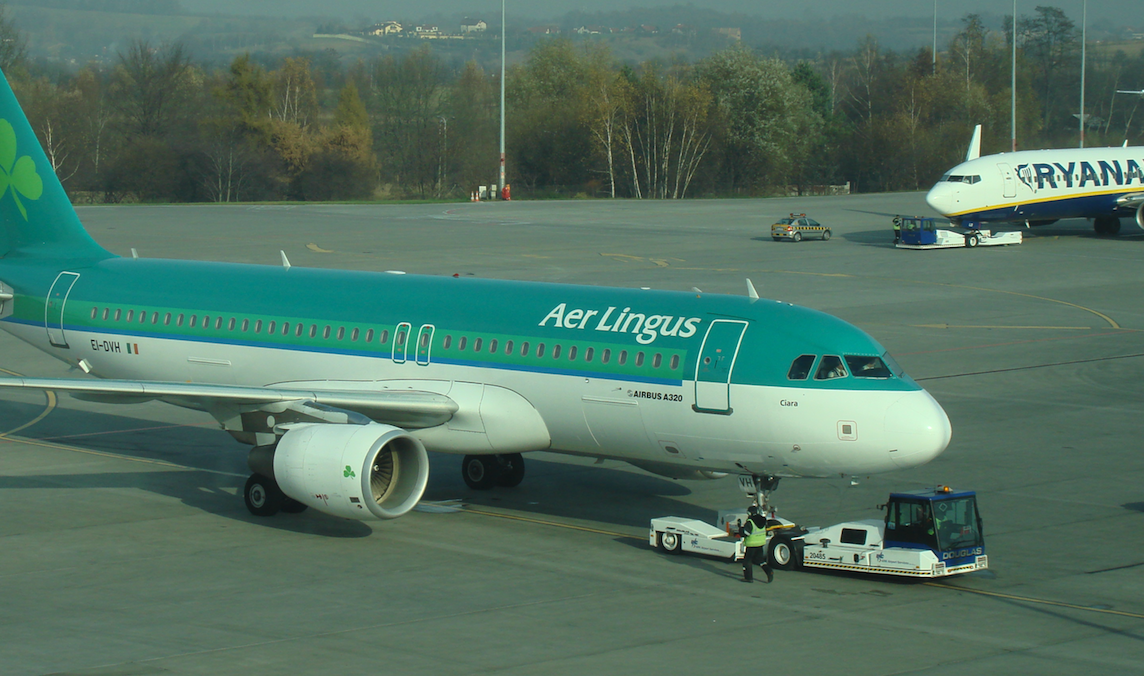
At the dawn of aviation, rolling planes, for example from a hangar to an landing area, was not a big problem. There are many archival photos in which several people roll a small plane. As most planes had a tail skid, not a wheel, a trolley was often placed under the tail of the plane with a two-wheeled wheelchair. The trolley had a handle (drawbar) that assisted in maneuvering the plane. Over time, the strength of human muscles was insufficient. Horse carts began to be used. In Poland, Farman F.68 Goliath planes were wheeled over with a harness of two horses fastened to a trolley placed under the tail of the plane.
With time, agricultural tractors (tractors) began to be used. In Poland, Ursus tractors were used by LOT Polish Airlines to roll Antonov An-24 passenger planes. This is the method used to date. For example, PZL M-28 Bryza planes are rolled in this way.
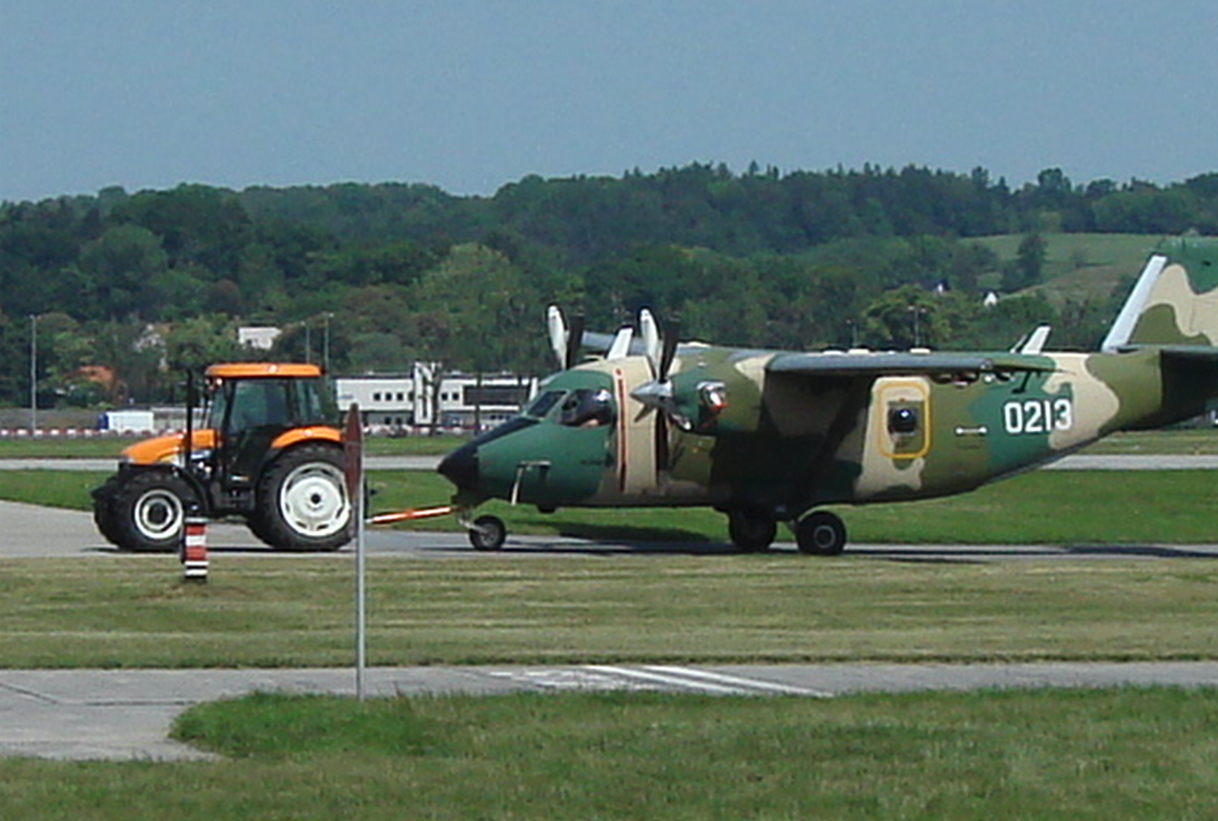
With time, agricultural tractors (tractors) turned out to be too small (low weight) and too weak (low engine power). Automobile tractors began to be used. In the times of the Polish People's Republic, STAR 66/266 trucks were used to move MiG-21 and Su-7/20/22 combat aircraft. In the 70s, LOT Polish Airlines used specialized airport tractors. They were small, very maneuverable and relatively heavy. Initially, they were painted orange and then white.
In 40 years at airports in the USA, individual planes were wheeling sideways, like a bus to the stop bay. The largest planes at that time (Douglas DC-4) were about 30 m long, and the span was about 35 m. Such a gate (gate) was then about 100 m long. walking distance. Therefore, the platforms began to be placed in parallel. The problem, however, was that passengers then had to cross the taxiway, which could be very dangerous. Therefore, it was necessary to start using tractors capable of pushing (withdrawing) planes from the platform position.
The first airport tractors used to push (Push-Back) planes from the gate stand appeared in the 1950s. This was due to the necessity to increase the safety level to prevent an accidental passenger from getting under the rotating propeller; and he did not die. With the introduction of turbojet airplanes into service, the problem has increased. The development of aviation, and with it the emergence of heavy transport aircraft (wide-body), meant that airport tractors began to be set higher requirements. Over time, this led to the creation of a specific group of airport vehicles.
Contrary to appearances, airport tractors do not have very large engines. Instead, they have elaborate gears to increase power on the wheels at the expense of speed.
Airport tractors are also called airport tugs or tractors. Generally, airport tractors are divided into drawbar and non-drawbar tractors. The former still constitute the majority. They are more universal. They can maneuver not only a narrow group of aircraft types, but also can be used for other non-standard airport works related to short-term transport. Drawbarless tractors are more specialized, they are only used for certain types of aircraft. Theoretically, they are easier to handle. However, a complicated hydraulic system is to come, which grabs the wheels of the front undercarriage in the so-called cradle and lifts a dozen or so centimeters above the ground.
In the 70s, the more famous companies that built airport tractors included the French company Tracma, the British company F. L. Douglas Equipment, the American company International Harvester Company. There were a dozen other companies that, somewhat off the beaten track of their main production, also built airport tractors.
At the turn of the 1960s and 1970s, wide-body, heavy and very large planes appeared: Lockheed C-5 Galaxy, Boeing B.747, Douglas DC-10, Lockheed L-1011 TriStar. The towing conditions for this type of aircraft have changed not only due to their large weight (about 300 Mg), but mainly due to greater wheel friction against the surface. The landing gear of the Boeing B.747 consists of as many as 18 wheels. Therefore, in the USA, UK and France, tests were started, the results of which were to be used to develop airport tractors for these aircraft. First of all, the Boeing B.747 aircraft were tested, because they were the first to be purchased by European carriers.
It is known that the greatest strength must be put on moving the plane from a standstill. It turned out that in order to move the Boeing B.747 backwards, with all engines turned on and at idle speed, about 255 kN was needed. Of this number, 70 kN is needed to overcome the resistance of the idling engines. On the other hand, to keep the already started B.747 plane in motion, at a speed of 35 km / h, only 50 kN is needed. By translating these values into the power on the tractor wheels; 2,230 kW are needed for starting, and only 750 kW for turning (35 km / h).
It was then that the idea of building two types of airport tractors was born. Slow (max 35-40 km / h) called shunting tractors, with engines power of 300-350 kW. The second type, fast tractors (max 70 km / h), bringing planes from RWY (runway) to the platform position. They were to have engines with a power of 750-800 kW. In principle, the aircraft engines were to run only on the RWY. Fast towing tests were carried out with the use of drawbar tractors. A speed of 58 km / h was reached, but then the tractor-airplane team was starting to zig-zag. Deviations from the assumed trajectory exceeded 0.8 m. As a result, the structure of the aircraft and the tractor was strained. Worse, because the hall could break. Interestingly, the same phenomenon occurred with the lighter (130 Mg) Boeing B.707. The idea of building high-speed tractors was not implemented then.
Currently (2018) in Japan, at some airports, tractors not only push planes onto the taxiway, but also taxi them almost to RWY and also pull them from the vicinity of RWY to the platform (gate). However, the taxi speed does not exceed 35 km / h. This parameter resulted from safety regulations. Virgin Atlantic did the same. However, this practice in the USA was discontinued after an increase in equipment maintenance costs due to stresses during towing. This method also places a greater burden on crews and ground equipment, especially if the plane and tractor have to wait in a long line of planes waiting to take off.
Attempts to tow with a drawbar prompted the search for another alternative. This is how airport tractors, referred to briefly, were developed; non-aspirated. But how to do it? Only the shin and wheels of the front undercarriage were involved, especially as it is torsional. The first designs of such tractors had a low platform that had to be pushed under the front wheels of the aircraft. When they were on the platform, they were blocked with wedges. The problem is that in the initial phase the main landing gear had to be locked and then released. It also involved the crew of the plane, which in this phase of preparation for the flight still has their hands full. The constructors concluded that the process must be less complicated. As large forces are required for this, the focus was on hydraulically operated mobile arm systems. Several solutions emerged. However, they all operate on the same scheme - a hydraulically actuated cradle.
At the beginning; the tractor approaches the wheels of the plane and is operated against them by the front cradle fenders, the shape of which is to fit the tire as much as possible. Then, the rear fenders are pulled out of the tractor (double on one side or single for each wheel) and rest against the tires from the rear. In turn, the entire set of fenders (cradles), with the airplane wheels caught, is lifted a dozen or so (15-30 cm) up. Also the hydraulic system. Passengers usually do not feel these signs. The airplane-tractor unit is ready to move. After the plane has been moved, the steps are in the reverse order. All Push-Backs (tractors) have the same basic functions. The driver-operator sits in the vehicle's cabin, which is often acoustically insulated. The tractor usually has wired or wireless communication with the flight crew. If there is no such communication, next to the airplane-tractor set is Marshaller, which has such communication with the aircraft crew. It all depends on the adopted procedures of a given airline and / or operators at airports. Each airport tractor, just like the car has, a sound signal, a set of lights, rear-view mirrors and others, improving the view from the operator's cabin (for example, the view of the drawbar hitch with the tractor), parking brake. Tractors are often all-wheel drive. Tractors are very maneuverable vehicles. The wheels of two axles, front and rear, are often turned, which results in a much smaller turning radius. There are solutions in which both the front and rear wheels can turn in the same direction, which allows the vehicle to move slightly sideways. Tractors have four to six wheels. It can have two axes or three axes.
Airport tractors have a specific look. They are as low as possible so that they can run under the nose of the plane and not damage it. The operator's position is located in the cabin, which very often has the ability to raise and lower to improve visibility from the tractor cabin. Tractor tires are as small as possible in diameter and, at the same time, as wide as possible. This width is due to the desire to obtain the best possible adhesion to the substrate. The tractor must be as heavy as possible. Therefore, the structure often has additional ballast. A typical large aircraft tractor weighs up to 54 tons (119,000 lbf) and has a drawbar with a thrust of 334 kN (75,000 lbf). The heaviest tractors of this type are used for B.747, B.777, A.380, A.330, A.340 airplanes.
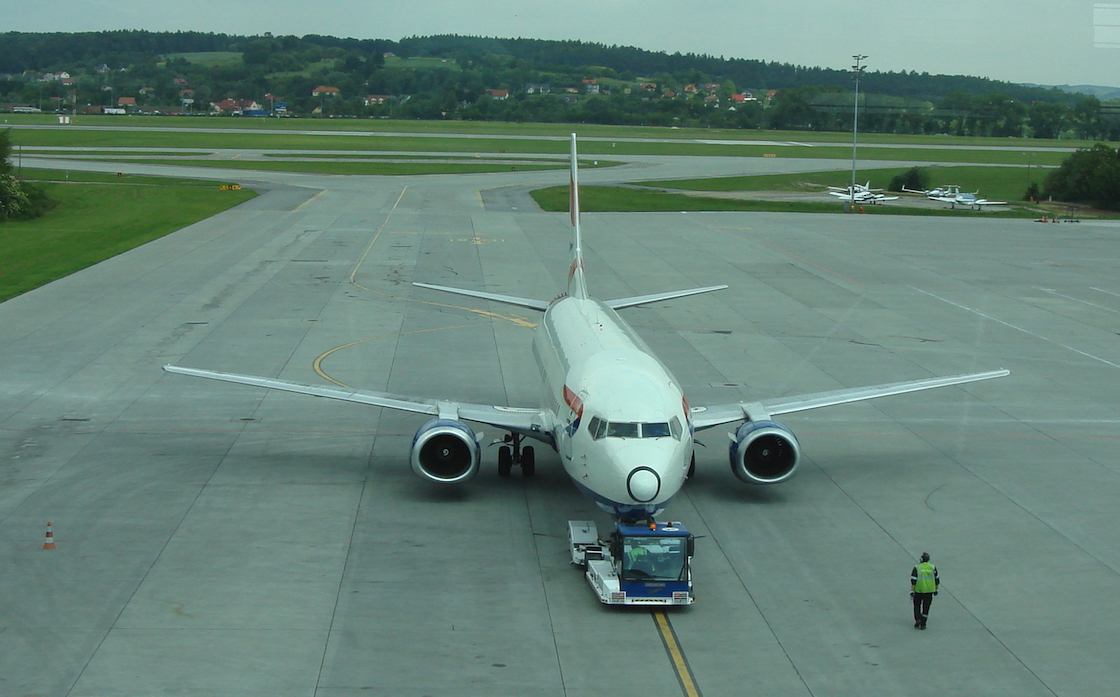
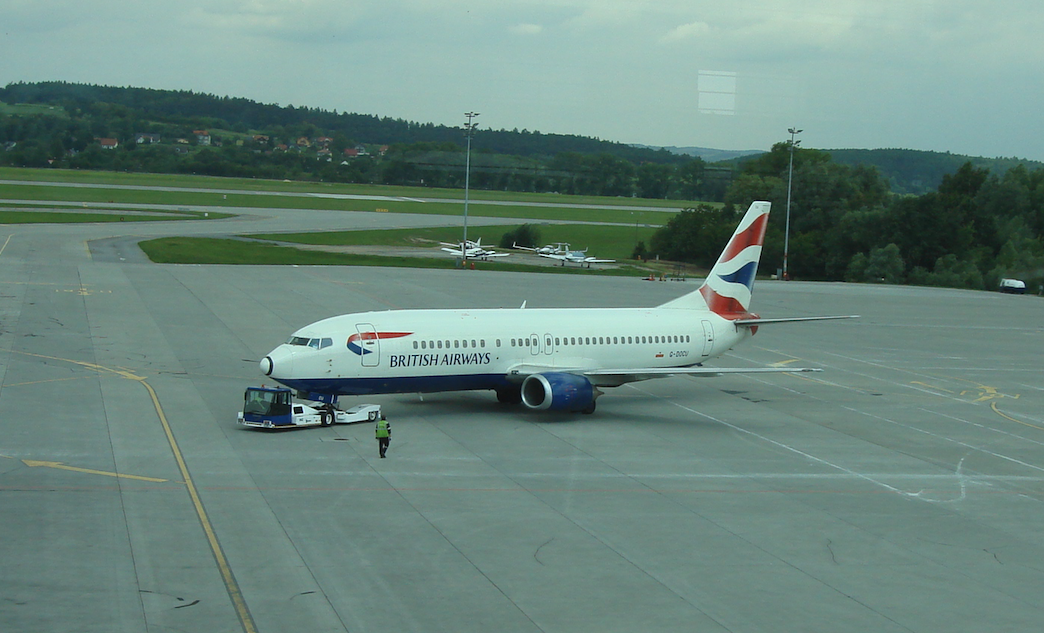
The current (2017) large airport tractors are still built in non-drawbar versions as well as classic tow bar (boom) tugs. The classic ones have hooks both at the front and at the rear of the vehicle. The couplings are designed in such a way that they have the possibility of adjusting the height of the drawbar fastening. Thanks to this, they have the ability to tow various types of aircraft. The catches (hooks) are designed so that they can move laterally and repeatedly. Each type of aircraft has unique towing equipment, so that the hook also acts as an adapter between a standard tug and a specific hitch for a given aircraft. The drawbar must be long enough to place the tug far enough to avoid hitting the plane. Each drawbar has its own wheels that lower to the ground to transport the drawbar when it is not attached to the plane. With heavy drawbars, its wheels are lowered hydraulically. Thanks to this, it is easy to set the right height for fastening. After fastening the drawbar wheels are lifted upwards. After the Push Back process, the steps are performed in the reverse order.
Drawbar tractors are more versatile. They can also be used for towing airplanes, airport aggregates, gangways, luggage trolleys, etc.
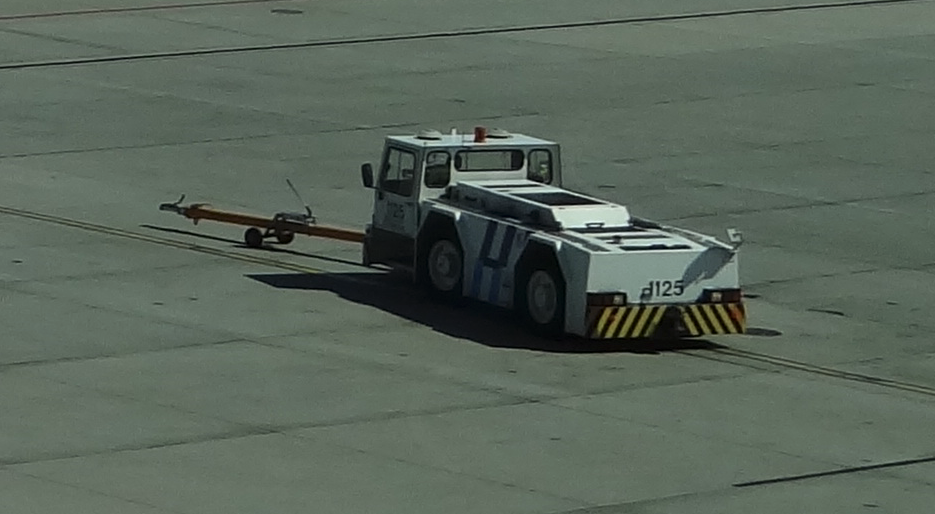
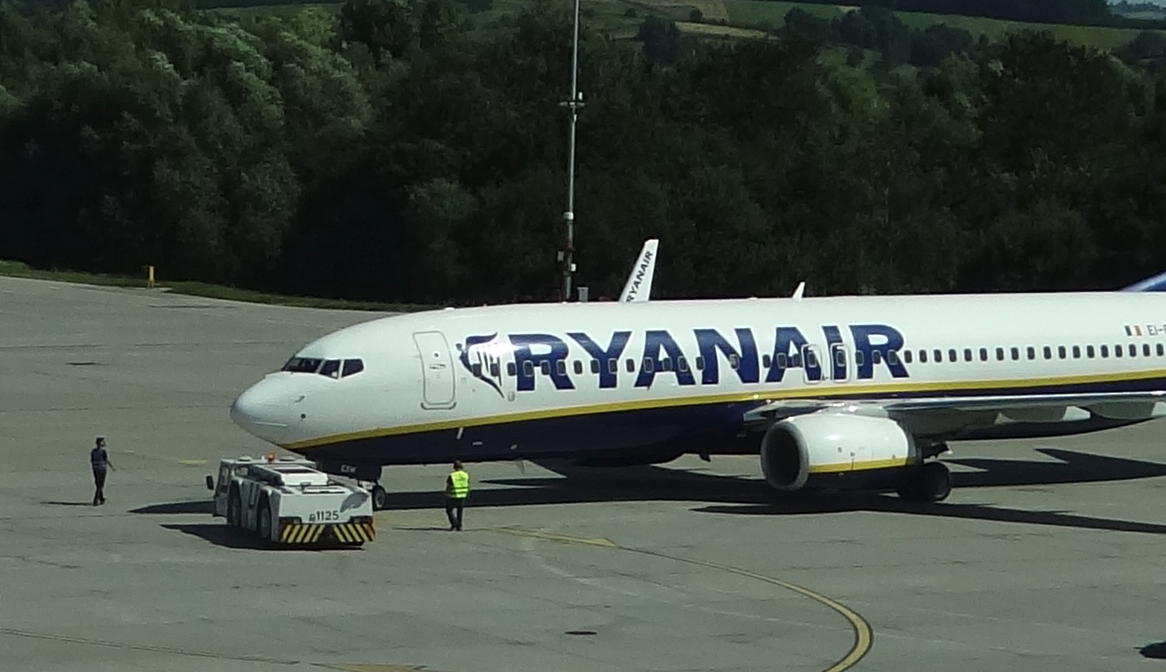
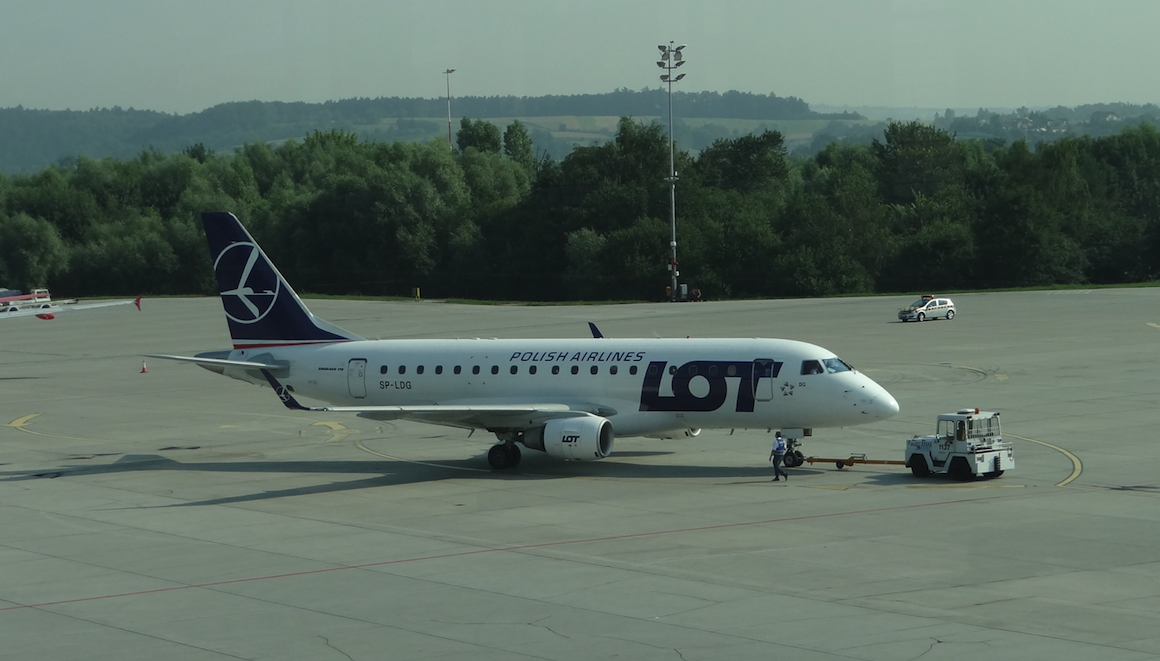
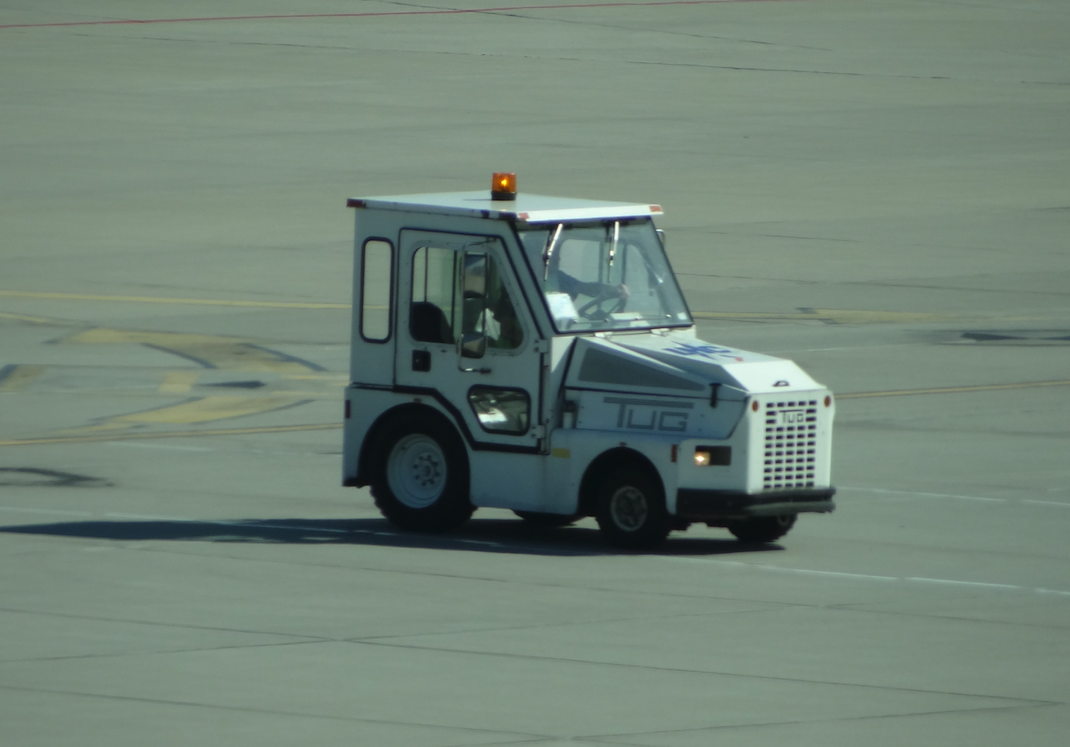
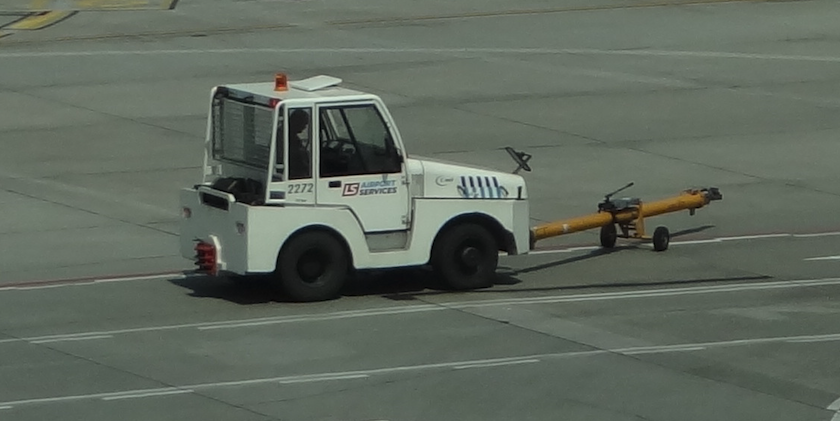
To be continued in the next chapter.
Written by Karol Placha Hetman
